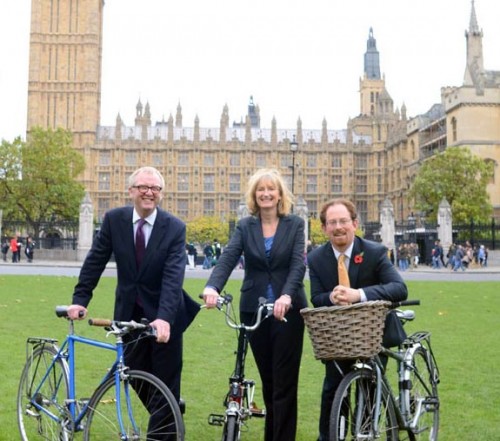Being on holiday, you often miss all the news (which is quite refreshing). But, I did seem to miss the all party parliamentary – ‘Get Britain Cycling’ initiative.

Improving the situation on the roads, any small incremental improvement is worth encouraging. There will be no Dutch revolution where we wake up one day, with beautiful traffic free cycle lanes to our place of work. But, even small improvements in motoring standards and cycle infrastructure may encourage a few more people to take up cycling, and make our experience a little safer. The fact 100 MPs turned up is encouraging. Even a recognition of the benefits of cycling is reassuring. It makes a change from MPs trolling out stereotypes of young tearaways on BMX going through red lights e.t.c.
Even so, words are cheap and the more cynical will be thinking, ‘words are nice, but show us the colour of your money.’ British Cycling put it quite well.
“I’ve been encouraged with the Prime Minister’s support for cycling and the government’s statement that it wants to put cycling at the heart of its policies. However, when we have a Highways Agency budget of £15 billion for five years contrasted with £159 million for cycling spread over two years with no commitment to continuous funding, it’s clear that’s there’s still more work to do so that actions match words. I am pleased though that we’ve had this debate in the House of Commons and that cycling is being talked about where it matters.” (British Cycling)
The Get Britain Cycling inquiry’s report, published on 24 April, made several recommendations for the government, including endorsing a target of 10 per cent of all journeys to be made by bike by 2025, and 25 per cent by 2050.
Initiatives in the report include:
- A statutory requirement that the needs of people travelling by bicycle or on foot are considered at an early stage of all new development schemes.
- Revise existing design guidance, to include more secure cycle parking, continental best practice for cycle-friendly planning and design.
- The Highways Agency should draw up a programme to remove the barriers to cycle journeys parallel to or across trunk roads and motorway corridors.
- Local authorities should seek to deliver cycle-friendly improvements across their existing roads, including small improvements, segregated routes, and road reallocation.
- The Department for Transport should approve and update necessary new regulations, such as allowing separate traffic lights for cyclists.
Related

No comments yet.